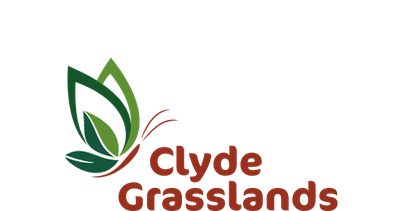
Why Wetlands?
Wetlands are a diverse and unique set of habitats with wet soils and plants that favour those conditions They include marsh, swamp and fen, peatland, wet woodlands and marshy grasslands, as well as lochs, ponds and rivers which support wetland habitats. Such diversity supports rich communities of plants, birds, mammals and invertebrates, many of which are endangered.
Wetlands also deliver benefits for climate and people. As our climate gets wetter, they provide natural flood management, protecting homes and businesses from flooding. They are also one of the most effective carbon sinks on the planet and help improve our water quality.

Restoring our wetlands
Wetlands have been disappearing at an alarming rate, with 90% of UK wetlands lost in the last 100 years, making it one of our most threatened ecosystems. This collapse has largely been caused by changes to the way we use land, with agricultural intensification being the biggest factor.
We are seeking to reverse this loss by working with a wide range of strategic and delivery partners to develop the Clyde Wetlands initiative. We will target over 150 locations for wetland creation, restoration and management across the City Region, making wetlands once again a common feature in our landscape.

What is Clyde Wetlands?
In 2019 the GCV Green Network launched its Blueprint which set out a framework for delivery of the Green Network across Glasgow City Region. The Blueprint was based on two key components: an Access Network for people and a Habitat Network for wildlife. The Habitat Network is based on four habitat types, woodland, grassland, peatland, and wetland. Our Clyde Wetlands initiative was developed to deliver on the latter.
Working with NatureScot, Green Action Trust, Wildfowl & Wetland Trust, and Buglife Scotland, we are seeking to undertake wetland “opportunity mapping” analysis for the region. This work would identify locations where the creation, restoration or management of wetlands would help reverse habitat loss and restore wetland networks, providing a framework for delivery. We will then work with delivery partners across a range of sectors to make our ambitions a reality.
Clyde Wetlands has three elements

Catchment
Wetlands are crucial in helping us adapt to climate change, providing catchment-wide natural flood management

Connectivity
Targeting habitat creation will create a permeable landscape for species to move through freely

Collaboration
Successful delivery needs to happen across a range of land uses and ownerships requiring different approaches and partners
Benefits of wetland restoration
Wetlands support a large number of threatened mammal, plant, invertebrate, amphibian and bird species, many highly specialised for these habitats. This includes dragonflies, the great crested newt, a wide range of birdlife from waders to reedbed specialists, and mammals like otters and water voles. Restoring wetland habitats will not only protect existing wildlife, but also allow other lost species to return.
For wetland species having a variety of good quality habitat that is well-connected into networks is critical so that they can move more easily through the landscape. This is particularly important in our Region with extensive urban areas and intensive agriculture, as well as the Clyde and Forth Estuaries acting as a “pinch point” for species migrating north due to the effects of climate change.

The role of wetlands in absorbing and storing carbon is often underestimated. They store decomposing plants before they decay and release carbon back into the atmosphere, making wetlands important carbon sinks. The ability of wetlands to store carbon varies according to their condition, making restoration and good management vital if they are to play a significant role in reaching Net Zero targets.
With increasingly frequent and more intense rainfall, flooding is a particular issue for our Region. Wetlands can store water in cloudbursts before releasing it gradually back into river and drainage networks, “slowing the flow”, and protecting urban areas.

Wetlands are truly multi-functional habitats in their capacity to deliver a wide range of benefits, not only for nature and climate but also for people. Wetlands deliver a range of “water services”, providing us with natural flood management, protecting our communities, and helping improve water quality, naturally filtrating polluted water without the need for chemicals.
With the majority of people in Glasgow City Region living in towns and cities, wetlands can provide relief from the stresses of urban life, helping improve mental and physical wellbeing by providing access to nature close to home.


Where is Clyde Wetlands?
Glasgow City Region spans the eight local authorities of East Dunbartonshire, East Renfrewshire, Inverclyde, Glasgow, North Lanarkshire, Renfrewshire, South Lanarkshire and West Dunbartonshire.
It covers over 330,000ha and contains diverse landscapes ranging from uplands and moors, through river valleys and rolling farmland to Scotland’s largest urban area in the Central Belt.
Creating wetlands across this range of situations will demand different approaches and partners - from naturalised urban drainage in new development and greenspaces, working with local communities and councils, to nature friendly farming practices, working with land managers and landowners.
What are the issues?
As our urban areas have expanded over the decades, along with more intensive farming practices that prioritise productivity, many of our historic wetlands have been lost. Floodplains have been drained, rivers and burns channeled or piped, and ponds filled in. This has had a devastating impact on wetland wildlife, with the remaining wetland habitat scattered in patches, largely unconnected, and unable to support the abundance of species they once did.
Clyde Wetlands seeks to reverse this decline, restoring wetlands to our landscape and boosting wildlife numbers as well as providing a host of benefits to the people of the region.

Flooding is already a major issue for our region, and one predicted to increase by climate models. Dealing effectively with flood risk requires a mix of approaches, from hard engineering through to natural flood management.
This works best when planned and delivered at a catchment scale, from tree planting and peatland restoration in the upper catchments intercepting and holding back water, through reconnecting rivers with their floodplains and restoring natural river alignment, to opening up culverted water courses and creating ponds and rain gardens in urban areas.
Planning for and delivering habitat networks also works best at a landscape scale, such as a catchment. The opportunity therefore exists to work with partners from a range of sectors to ensure wetland creation and restoration delivers on multiple regional priorities.

Our aim is to target restoration in key locations to create a more permeable landscape, allowing wetland species to move freely through, and between, habitats. This is important for wildlife in order to search for food, to mate, to escape catastrophic events such as fire, and also to adapt to a changing climate.
Intensive land uses such as agriculture and urban expansion, have caused significant “fragmentation” of wetland habitat, where so much has been lost that only isolated habitat patches remain. Restoring and creating wetland habitat corridors and stepping stones in key locations will reverse this fragmentation, making it easier for species to move through the landscape. Connecting these habitat patches will create ‘nature networks’, which are a policy priority for the Scottish Government, and with a responsibility for our Local Authority partners to deliver. Supporting and facilitating this work will be a central role for GCVGN in the coming years.

Collaboration is critical to the success of wetland restoration at a landscape scale. It requires multiple partners from across the public, private and voluntary sectors to each play their own role in a bigger overall picture.
Working at landscape or catchment scale by its very nature requires stakeholders such as local authorities to consider their restoration projects in the context of a much wider cross-boundary context. The pooling of expertise, resources and capacity, will also be critical to success. For local wetland projects in urban areas, communities can provide local knowledge, contribute ideas, and help with delivery and maintenance of wildlife habitats.
GCVGN has a key role to play in delivering a strategic regional approach. We want to bring the right skills and resources to the region to meet the scale of shared ambition, and to facilitate the partnership working necessary to deliver wetland restoration.

View our other delivery projects

Newsletter Signup
Learn more about GCV Green Network! You can be the first the hear about our latest news.
Designed & Built by Mucky Puddle










